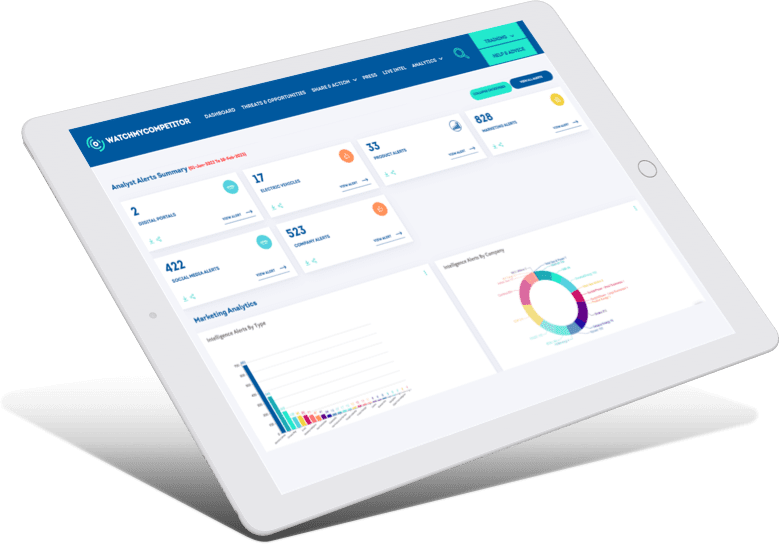Staying informed about your competitors’ pricing strategies is now a must. Monitoring competitor prices allows you to make informed decisions, maintain a competitive edge, and adapt effectively to market fluctuations.
This guide empowers businesses of all sizes to leverage the power of competitor price monitoring for strategic advantage.

Why Monitor Competitor Prices?
Monitoring competitor prices plays a vital role in shaping effective business strategies. It enables you to:
1) Maintain competitiveness
By closely monitoring competitor prices, you can ensure your own pricing remains competitive without compromising profit margins.
2) Make Informed Decisions
Data gathered from monitoring competitor prices empowers you to make informed pricing decisions, such as strategically introducing discounts or promotions.
3) Respond effectively to market changes
Monitoring competition prices allows you to identify market trends and adjust your own pricing strategy accordingly, allowing you to capitalise on opportunities and mitigate potential losses.
Choosing the Right Tools For Monitoring Competitor Prices
Several tools and technologies can aid your competitor price monitoring efforts. Here are some key considerations when selecting the right tool:
Real-time data: Choose a tool that offers real-time or regularly updated data to ensure your competitor price monitoring provides accurate and current information.
Actionable insights: Opt for tools that go beyond raw data and provide actionable insights, such as pricing trends and competitor behaviour analysis.
Budget & scalability: Consider your budget and future needs when choosing a tool. Ensure it adapts to your business’s growth and evolving competitor price monitoring requirements.
Setting Objectives For Monitoring Competitor Prices
Before delving into monitoring competitor prices, define clear and measurable objectives for your efforts. These objectives should be specific, such as:
Identifying pricing trends: Monitor competitor prices over a specific period to understand pricing patterns and predict potential changes.
Assessing competitiveness: Compare your pricing strategy with your competitors to determine your relative positioning and identify areas for improvement.
Informing pricing adjustments: Utilise the data from monitoring competitor prices to make informed decisions about adjustments to your own pricing strategy, considering factors like market demand and cost fluctuations.
Developing An Effective Plan To Monitor Competitor Prices
Here’s a step-by-step guide to developing a comprehensive competitor price monitoring plan:
1) Define the competitive landscape
Identify key competitors: Begin by identifying your main competitors. Consider factors like market share, product offerings, and target audience to create a realistic picture of your competitive environment.
Categorise competitors: Once identified, categorise your competitors based on their size, brand positioning, and target audience. This helps you understand the different pricing strategies within your market and allows you to tailor your monitoring efforts accordingly.
2) Select competitors for analysis
Prioritise based on market share: Focus your monitoring efforts on competitors with the largest market share or those most relevant to your target audience. Their pricing strategy likely impacts your market significantly.
Consider niche competitors: Don’t neglect smaller, niche competitors targeting specific segments within your market space. Their pricing strategies can reveal valuable insights into specific customer preferences and pricing trends within those segments.
3) Determine the frequency of monitoring:
Establish a baseline: Start by monitoring competitor prices at regular intervals, such as weekly or bi-weekly. This establishes a baseline understanding of your competitors’ pricing strategies and their typical pricing adjustments.
Monitor competitor promotions: Pay closer attention to competitor pricing during specific periods like sales seasons, new product launches, or competitor marketing campaigns. These periods often reveal strategic pricing decisions and warrant more frequent monitoring.
4) Identify products to monitor
Focus on core products: Prioritise monitoring the prices of your core products that contribute most significantly to your revenue and directly compete with similar offerings from your competitors.
Consider new products: Monitor competitor pricing for new product launches to understand their pricing strategy for new offerings and gain insights into potential future pricing trends for your own products.
Track bundles & promotions: Pay close attention to how competitors price product bundles and promotions, as these can significantly impact customer purchase decisions and influence your own pricing strategy.
6) Choose the right monitoring tools & resources
Utilise available resources: Consider leveraging free or low-cost online resources like competitor price trackers and web scraping tools (ensuring they comply with ethical and legal guidelines).
Evaluate paid solutions: Explore paid competitive intelligence platforms that offer automated data collection, real-time updates, and advanced analytics capabilities, saving time and effort while providing deeper insights.
Utilising Competitive Intelligence Platforms for Efficient Monitoring
Competitive intelligence platforms offer a powerful solution for streamlining your competitor price monitoring efforts. These platforms provide:
Automated data tracking: They automatically gather and analyse data from various sources, minimising manual work and ensuring consistent data flow for monitoring competitor prices.
Real-time insights: They offer real-time or near-real-time updates on competitor pricing, allowing you to react promptly to market changes identified through competitor price monitoring.
Advanced analytics: They provide advanced analytics tools that help you identify trends, patterns, and key insights from the data collected through monitoring competitor prices.
Interpreting Data & Making Strategic Decisions From Monitoring
Once you have collected data from monitoring competitor prices, it’s crucial to interpret it effectively. Look for patterns, trends, and anomalies to understand your competitor’s pricing strategy and its potential impact on your business. Use these insights to:
A) Develop pricing strategies
Utilise your findings from monitoring competitor prices to inform your pricing strategy, whether it’s adopting a value-based approach, matching competitor prices, or offering strategic discounts.
B) Identify market opportunities
Leverage the data from monitoring competitor prices to identify potential gaps in the market where your pricing strategy can offer a competitive advantage.
C) Optimise pricing tactics
Employ these insights from monitoring competitor prices to refine your pricing tactics, such as bundling products or offering targeted promotions to specific customer segments.
Challenges Associated With Monitoring Competitor Prices
Be aware of the potential challenges associated with monitoring competitor prices:
Data accuracy: Ensure the accuracy of the data you gather, as discrepancies can lead to misleading conclusions and ineffective strategies in your competitor price monitoring efforts.
Competitor variability: Be mindful that competitors may not always have consistent pricing across all products and channels. Consider the broader context when analysing data from competitors pricing.
Adapting strategies: Remember that competitor price monitoring is just one factor to consider. Adapt your strategies based on your overall market understanding and your unique brand value proposition, not solely on findings from monitoring competition prices.
Ensuring Compliance & Ethics In Monitoring Competitor Prices
Always practice ethical and legal competitor price monitoring. Avoid engaging in activities like:
Collusion: Avoid any agreements or discussions with competitors regarding pricing strategies through monitoring competitor prices or other means.
Unethical data gathering: Refrain from using unethical methods to acquire competitor data for your competitor price monitoring efforts, such as scraping websites that explicitly prohibit it.
Misrepresentation of data: Never misrepresent or manipulate data collected through monitoring competitor prices for personal gain or to harm competitors.
Measuring The Impact Of Monitoring Competitor Prices
To gauge the effectiveness of your competitor price monitoring efforts, track key performance indicators (KPIs) and metrics, such as:
1) Market share
Monitor changes in your market share over time, and analyse if your pricing strategy, informed by monitoring competitor prices, aligns with changes in this metric.
2) Sales conversion rate
Track how price adjustments and promotions influenced by insights from monitoring competitor prices impact your sales conversion rate, allowing you to refine your pricing tactics for optimal results.
3) Profit margin
Monitor the impact of pricing decisions based on competitor price monitoring data on your profit margin, ensuring competitiveness without sacrificing profitability.
By regularly analysing these KPIs, you can:
Demonstrate the value of monitoring: Quantify the positive impact of monitoring competitor prices on your business performance.
Refine your monitoring strategy: Continuously improve your competitor price monitoring process by identifying areas for optimisation based on the results and adapting to changes in the market.
Make data-driven decisions: Utilise the insights gained from measuring the impact of monitoring competitor prices to make informed decisions about future pricing strategies and optimise your competitive advantage.
Conclusion
Effectively monitoring competitor prices equips businesses with valuable intelligence and actionable insights, empowering them to navigate the dynamic business landscape with confidence. By implementing the strategies outlined in this guide, you can gain a competitive edge, optimise your pricing strategy, and ultimately achieve sustainable success in the marketplace.


